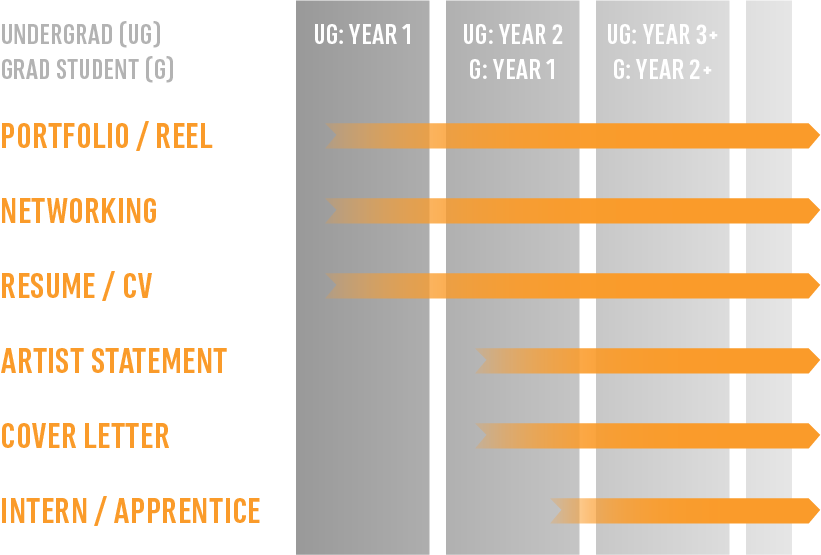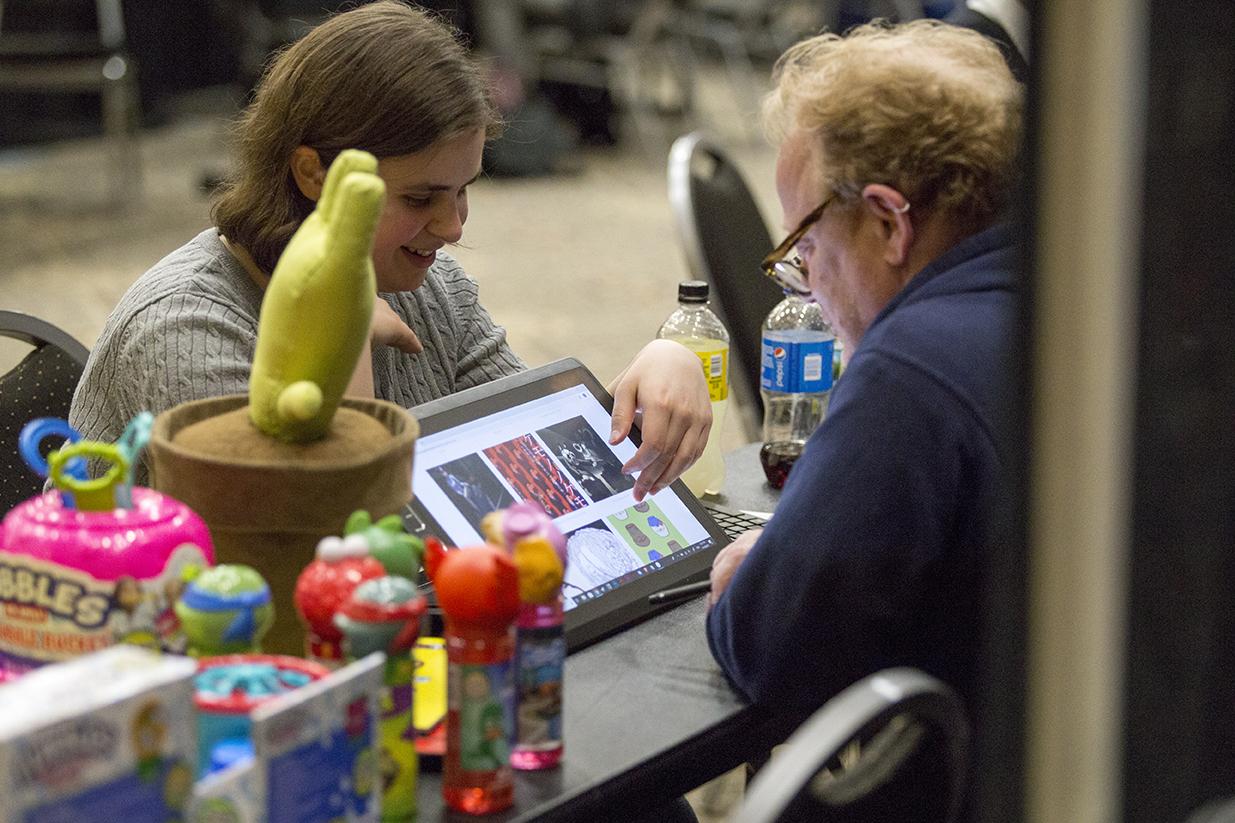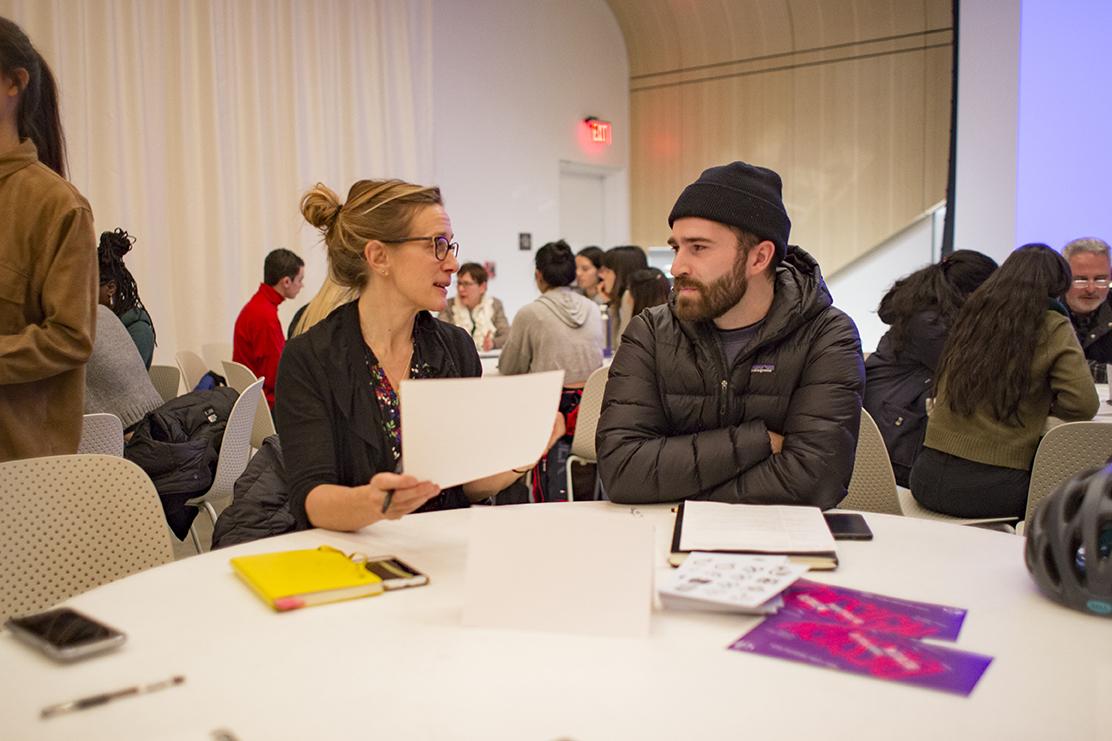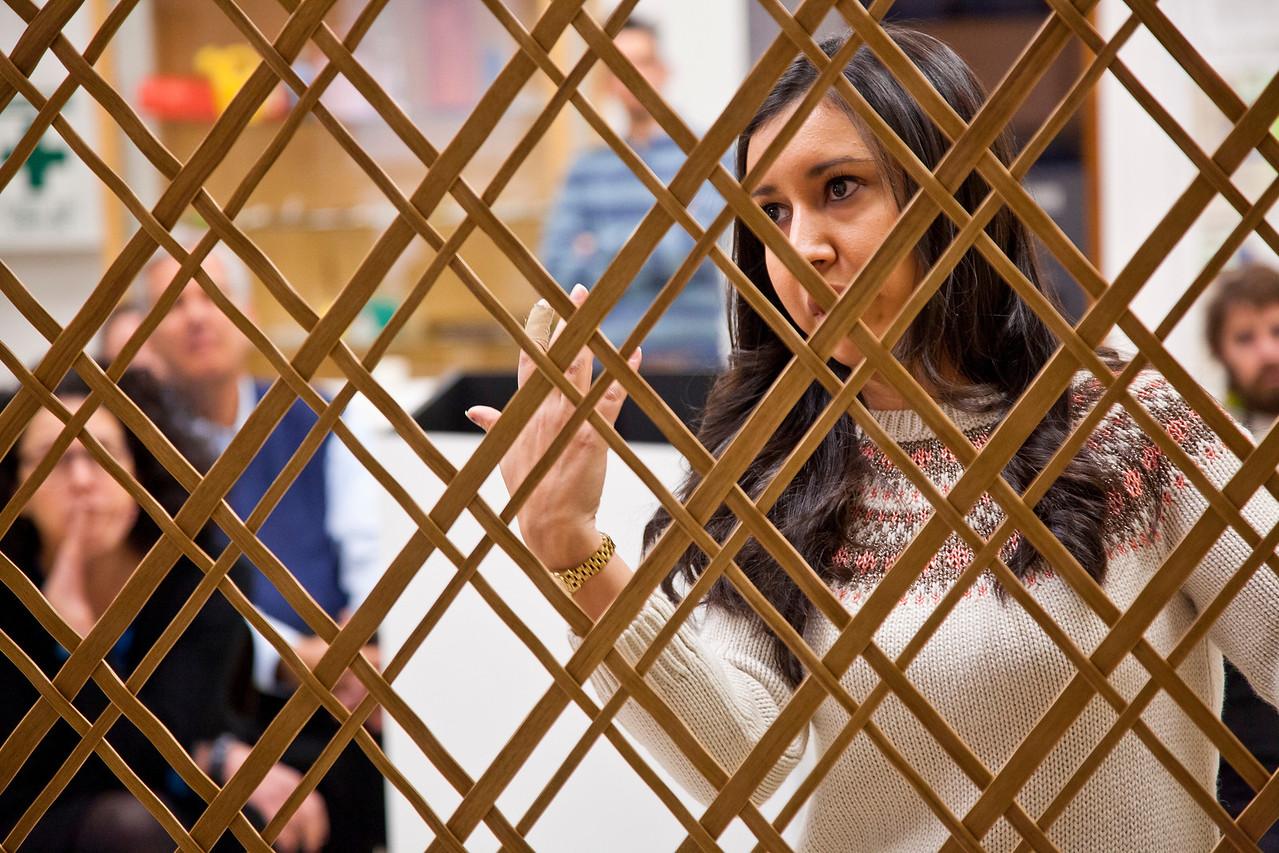Learn what you need to be prepared for internship or job applications, open calls for art, grant or fellowship applications, artist residency applications, and more.
The Career Development Process
Often times with career issues, it can be challenging to know where to start and what action to take. So, it can be helpful to have a solid understanding of the career development process, and the steps one can take to make progress towards their goals. This graphic might help you understand the process better.

Suggested Timeline
A common question from students is, “When do I need to have my resume and cover letters ready? My portfolio or demo reel?” While there is no set schedule, the following timing is a good starting point that you can customize to meet your own goals.









